8 Design Tricks From Sunny Botanical Gardens
http://decor-ideas.org 09/19/2013 23:40 Decor Ideas
If you're tired of seeing the same old temperate gardens in the magazines, let this tour of six botanical gardens from Florida to Arizona be your breath of fresh air. I'll show you what works about the gardens pictured and even show you how to apply their tricks to your own garden regardless of climate or budget. Even if you already know a thing or two about garden design (and I'm sure you do), you'll still enjoy perusing the photos I've taken of some really gorgeous gardens.
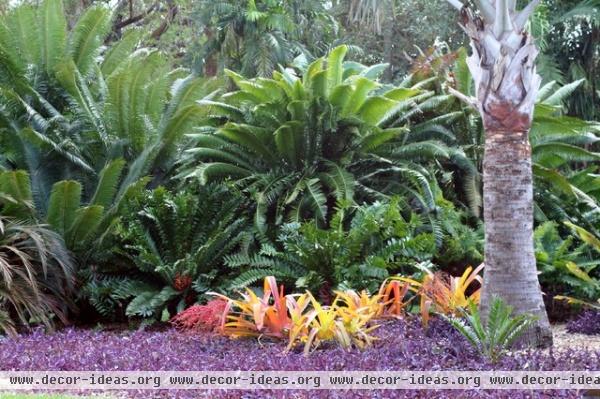
Fairchild Botanical Garden
Miami
More info
1. Use color bravely. Notice that I said to use color bravely rather than recklessly. The intense and clashing hues here would be at odds planted together in other gardens, but they seem perfectly balanced and pleasing in this one, thanks to a limited color palette and plant selection. The Green cycads (Cycas circinalis, zones 9b to 11) in the rear allow the eye to rest, while a mass of purple heart (Tradescantia pallida, zones 9 to 11) anchors the composition by punching purple shadows around glowing orange bromeliads (Aechmea blanchetiana, zones 9b to 11). A silver Bismarck palm (Bismarckia nobilis, zones 9b to 11) stands proudly like a white statue for the ultimate in contrasts.
Tip: A gardener outside of the tropics can get this look by choosing plants for their contrasting colors (ajuga and hostas, anyone?) and planting them en masse to thrilling effect.

Desert Botanical Garden
Phoenix
More info
2. Borrow views. "Borrowing a view" means to leave your garden open to a particularly pleasing view beyond the property line. In the case of the planting shown here, the scenery actually extends into the garden itself with barrel cacti (Echinocactus grusonii, zones 9 to 11) and other Arizona natives, creating a seamless transition between the property and the mountains beyond. The round cacti catch the golden light of the setting sun, borrowing a picturesque view and stealing the scene.
Tip: Not everyone has a vista of mountains beyond the backyard, but there are likely to be trees in adjacent properties that you can use to your advantage. Disguise eyesores such as other buildings by planting shrubs, leaving just enough space to catch glimpses of trees through the garden. You'd be surprised at the outcome.
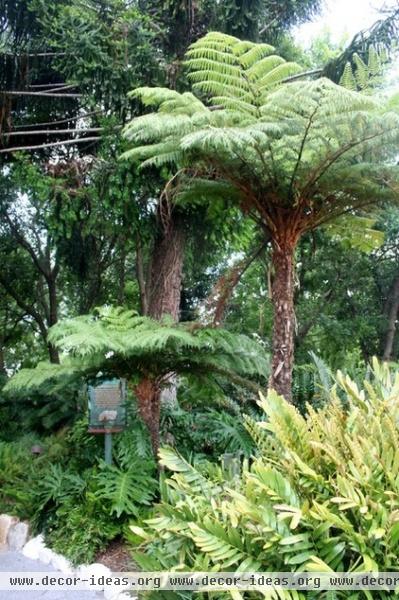
Disney Animal Kingdom
Orlando, Florida
More info
3. Showcase a collection. You wouldn't expect to see a world-class collection of primitive plants and ferns at a theme park, but Disney's Animal Kingdom is no ordinary attraction. Tree ferns (Cyathea cooperi, zones 9 to 11) and cycads smother the forest floor beneath towering magnolias and monkey puzzle trees (Araucaria araucana, zones 8 to 11). Dinosaur footprints stamped into the stained concrete betray your sense of logic and let your imagination run wild. And if you break out the binoculars and take a short hike, you're likely to find enough prehistoric plants to make a seasoned archaeologist do a double take.
Tip: Keeping a collection of themed or related plants in a more sensible-size garden can lead to a cluttered mess if you're not careful. To keep your daylily or hosta collection cohesive, use repetition — choose a consistent edging plant or ground cover for the foreground and a mass of shrubs for the background. This will help lead the eye through the garden.
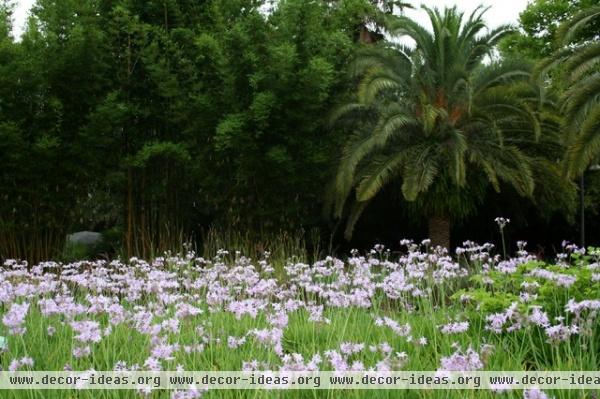
Jacksonville Zoo and Gardens
Jacksonville, Florida
More info
4. Practice restraint. To see the soothing effect provided by a mass of the same plant, look at this planting of society garlic (Tulbaghia violacea, zones 7 to 11) at the Jacksonville Zoo and Gardens' "Savanna Blooms" exhibit as an example. Here the plant palette is primarily South African species grouped together in naturalistic drifts. Every curve in the path reveals another river of color, be it a swath of orange Bulbine (Bulbine 'Hallmark', zones 9 to 11) or a billowing cloud of blue plumbago.
Tip: You might not think you have enough space just for a single ground cover, but it's likely that you do: Turf grasses probably already cover the bulk of your yard. Practice restraint in your own garden by limiting your plants to a handful of colors or by choosing a dependable plant and using more of it throughout the garden. Plan your garden before you fill up your shopping cart at the nursery.
The case for mass plantings
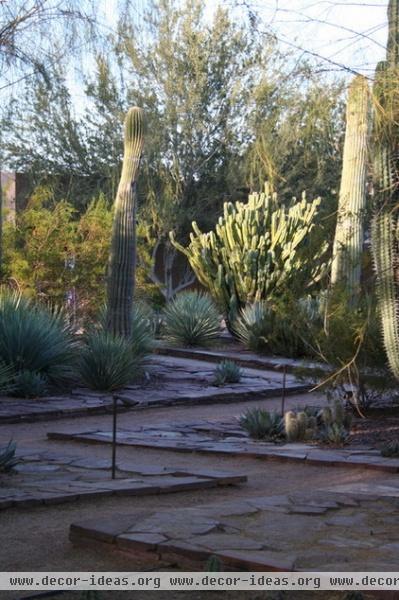
Desert Botanical Garden
Phoenix
5. Direct the view. Or direct the path too for that matter. This modern zigzag walkway at the Desert Botanical Garden brilliantly pulls visitors into the garden both visually and physically, allowing them to slowly take in the whole scene. Two saguaro cacti (Carnegia gigantea, zones 9 to 10) stand as sentinels and frame the view of the shorter, bushy cactus like big, prickly gateposts, but thanks to the jagged path, it takes your eyes a bit longer to even process that it's the end of the journey.
Tip: To direct views in your own garden, use negative space such as a mown lawn, low-growing ground covers or pathways that lead the eye toward a focal point, be it a garden structure, a statue or a specimen plant. Often the eye already has a path to travel on but there's nothing at the destination.
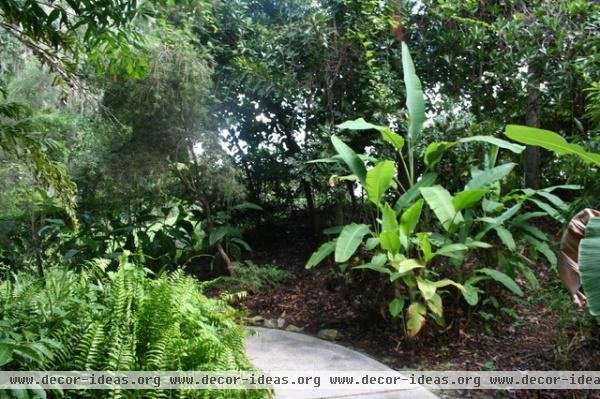
Leu Botanical Gardens
Winter Park, Florida
More info
6. Accent a pathway. Imagine this photo without that bright green paddle-leaved Heliconia (Heliconia species, zones 9b to 11) marking the curve of the path. Pretty boring, right? A curving pathway presents a valuable opportunity for a gardener to highlight a little something special where it's guaranteed to be seen, a tactic that has been put to good use here. It doesn't really matter that bare dirt, mulch and weeds surround the heliconia, because the plant is interesting enough to distract you from the unattractive details.
Tip: This attention-grabbing trick can be put to good use in the home garden with other exciting plants, especially to distract from an uninteresting or downright ugly view. Whether you plant a small tree with an interesting form, a perennial with spectacular flowers or a leafy foliage plant with unusual hues or extra-large leaves, by the time the visitor has finished looking at your chosen accent plant, he or she will have already moved on around the bend. Nothing more to see here ...
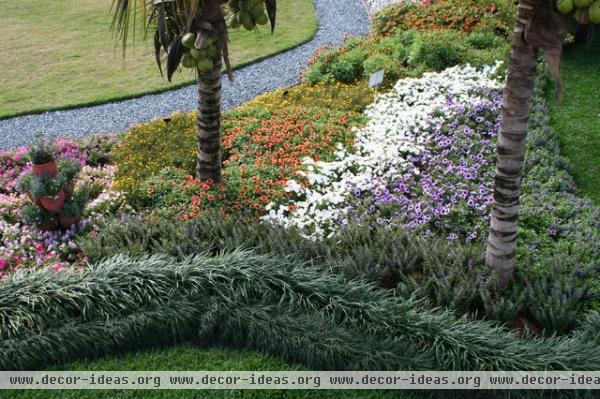
Costa Farms Trial Gardens
Homestead, Florida
More info
7. Garden like a painter. The trial garden at megagrower Costa Farm's nurseries might not be a botanical garden in the strictest sense, but creative plantings like this painterly flower bed make the short trip from Miami worthwhile. Here you can see many elements of a well-designed flower bed, from massed multiples of the same plant in organic shapes to cool colors and tall dark foliage planted at the back of the bed to make the other colors stand out. The effect when viewed overhead is similar to that of legendary landscape designer Roberto Burle Marx's painterly garden designs. He would actually create abstract paintings and design gardens based on his artwork.
Tip: Anyone can incorporate an artist's touch when designing a home landscape by treating the garden like one big canvas. How? Here's a hint: Artists paint using brushstrokes rather than random splotches, so plant accordingly. A good painter plans a work of art with creativity and wild abandon before refining it into a finished product, and the same is true for gardens.
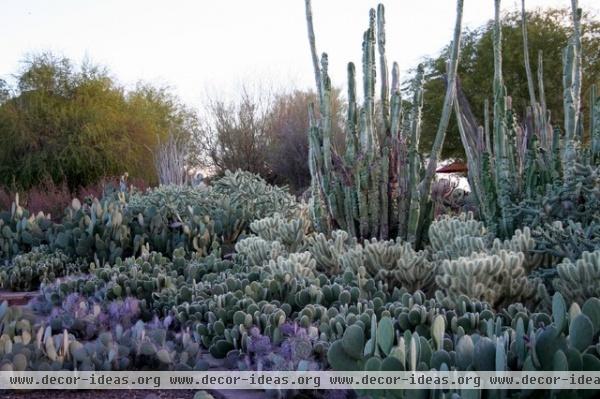
Desert Botanical Garden
Phoenix
8. Tailor a tapestry. I'm not implying that these cacti are touchable by any means, but their frosty texture brings something very special to this planting at the Desert Botanical Garden. This patchwork of purple prickly pears (Opuntia violaceae var. santa-rita, zones 7 to 11) and teddy bear cacti (Opuntia spp, various zones) is best seen and not touched, though you can create similar effects by using combinations of plants with similar colors.
Tip: A plant's texture is best defined by how fine or course its leaves look from a distance rather than how it actually feels.To make your own drought-tolerant and silvery planting, look to succulents like hens-and-chicks (Sempervivum spp) and stonecrop (Sedum spp, various zones) or herbs such as lavender (Lavendula angustifolia, zones 5 to 11) and thyme (Thymus spp, zones 3 to 9).
Related Articles Recommended












